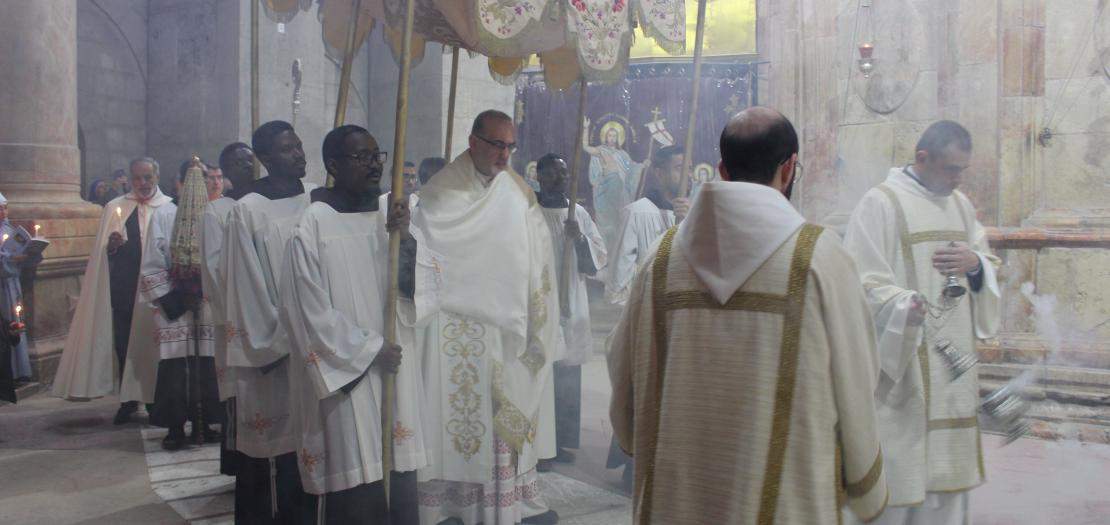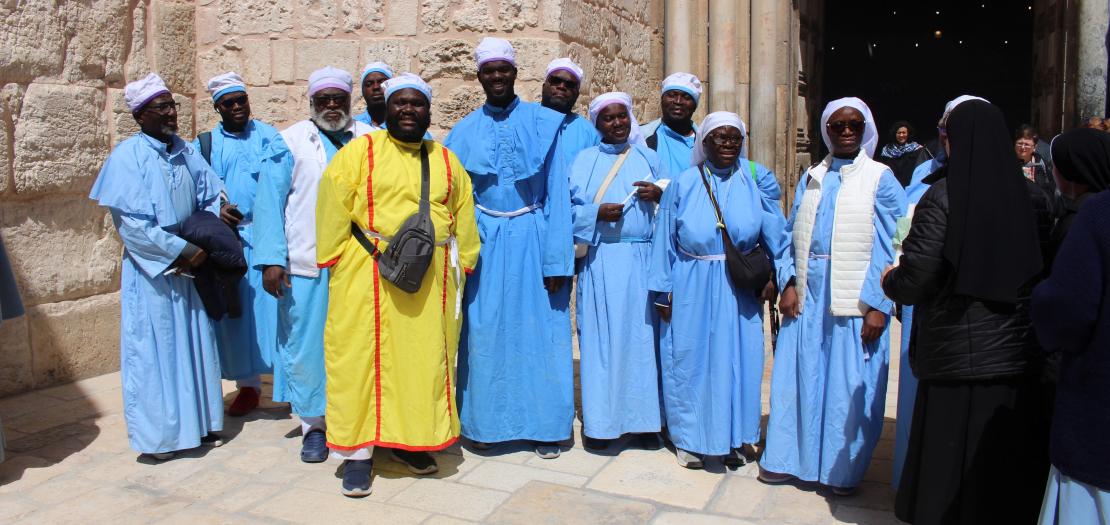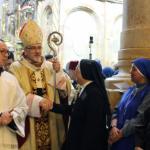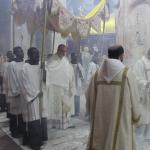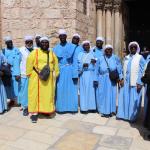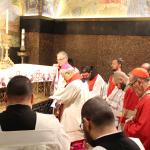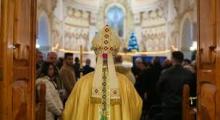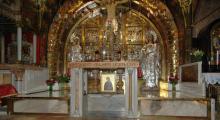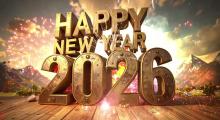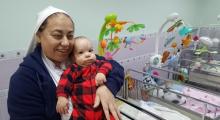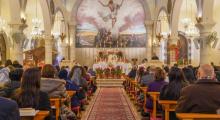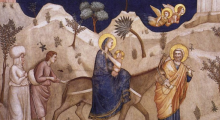Issued by the Catholic Center for Studies and Media - Jordan. Editor-in-chief Fr. Rif'at Bader - موقع أبونا abouna.org
From March 24 until March 31, 2024, the streets of the Old City of Jerusalem witnessed several processions and prayer marches, sometimes several times a day. Many Bishops, priests, seminarians, consecrated, the faithful of Jerusalem, or rare pilgrims, were eager to bring the world's prayer for Peace to the foot of the Cross and the empty Tomb.
The Chrism Mass on Holy Thursday was a moment of sacerdotal fraternity, as the priests renewed their promises before the Patriarch, who presided over the liturgy, along with the auxiliary bishops.
Some of the priests had come from afar, carrying the prayers of their parishioners and bearing witness to their faith filled with hope despite the situation. All they could do was carry their agony of the past several months to the Man of Sorrows, and bring back souvenirs from the Holy Week celebrations, which they longed to take part in.
In his homily, the Patriarch recalled that " today we are mystically back in the Upper Room to relive the Lord’s last evening. We are here to once again learn from the Master Who asks us to act, or rather, to be like Him. In spite of our fatigue and disorientation, we are here because we want to continue to be “resurrected Christians and priests”, capable thanks to him of ever greater love, to give ourselves to the end, with trust and hope in the God who raises the dead.”
The Holy Chrism, consecrated during this mass in the presence of the priests and bishops of the Diocese of Jerusalem, will be used for all the sacraments of the coming year.
The Blessed Sacrament was carried in procession around the aedicule, then to Calvary, before being deposited in the tomb which, at the Holy Sepulcher, serves as a repository. In this way, the liturgy helps us to mark Our Lord's entry into agony and the expectation of the Resurrection.
At the end of the ceremony, a group of pilgrims from Nigeria expressed their gratitude and excitement at being able to celebrate Easter on the sites where these events took place 2,000 years ago.
The Good Friday service was presided over by Cardinal Pizzaballa. A procession to the Calvary brought a relic of the true cross, which he prostrated himself upon. Then, the Gospel of the Passion of Christ was read, followed by a veneration of the Cross. It was marked by the presence of several Knights and Dames of the Holy Sepulcher, who had come especially for the Easter Triduum, in solidarity with the inhabitants of the Holy Land.
To commemorate the Lord's Passion, the Franciscan Custody of the Holy Land, led the Way of the Cross on the Via Dolorosa Stations, and presided over Christ's burial.
At the Easter vigil on Holy Saturday, presided over by Cardinal Pizzaballa, after the liturgy of the fire and the water, the bells and alleluias rang out for the first time since Ash Wednesday. In front of the Empty Tomb, which all the world's parishes celebrate that same day, the Patriarch's homily expressed with confidence: " We still enter death, but we no longer remain in it, we go beyond it. Jesus has unhinged the gates of the kingdom of death with the only weapon which death cannot resist, which is love.”
This vigil prepared us for the "gospel full of momentum and life" of the Easter Sunday mass, where the Patriarch, who presided over the celebrations, exhorted us in his homily saying: "It is time to begin again," with courage and hope, in the light of the Risen Lord: "We want to be those who have the courage to bet on peace, to continue to trust our neighbor, to not fear betrayals, to be capable without tiring, of starting over each time and build relationships of fraternity, moved not by the expectation of success, but by the desire for goodness and life that the Risen One has placed in our hearts."




